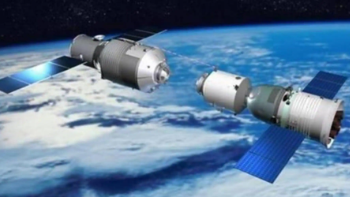ISRO Receives Satellites for SPADEX Docking Mission
The Indian Space Research Organisation (ISRO) has recently acquired two 400kg satellites for an important mission called SPADEX, or Space Docking Experiment. This mission aims to demonstrate the ability of two satellites to dock in space, marking a key step for future space missions.
SPADEX Mission Overview
SPADEX involves launching two satellites into slightly different orbits using a single rocket. Once in space, these satellites will travel at speeds of approximately 28,000 km/h. They will align and perform a ‘space handshake’ to dock together, forming one orbiting unit. This docking capability is crucial for future missions, including Chandrayaan-4 and the proposed Indian Space Station.
Significance of Docking
Docking technology is essential for various space operations. For instance, when astronauts travel to a space station, their spacecraft must dock precisely with the station. This ensures safe transfer of crew and cargo. SPADEX will validate the autonomous rendezvous and docking capability, which is fundamental for constructing and maintaining a space station.
Role of Ananth Technologies
Ananth Technologies Private Limited (ATL) played a pivotal role in this mission. They completely assembled, integrated, and tested the two satellites at their Bengaluru facility. This is a notable shift as it marks the first time ISRO has relied on a private company for the full assembly of satellites. ATL has been a key partner to ISRO since 2000, contributing to various Indian space missions.
Impact of Space Sector Reforms
The successful collaboration between ISRO and ATL is a result of recent reforms in the Indian space sector. These reforms aim to increase opportunities for private companies, fostering innovation and efficiency in satellite manufacturing and space missions. This partnership exemplifies the growing involvement of the private sector in India’s space exploration efforts.
Future Missions and Goals
The technologies tested in SPADEX are vital for India’s aspirations in space. The country plans to establish its own space station by 2028. The ability to dock satellites will allow for the robotic assembly of large components of the space station. Additionally, Chandrayaan-4, which aims to return lunar samples, will also utilise autonomous docking technology.
Next Steps for the Satellites
Following their delivery to the UR Rao Satellite Centre (URSC) in Bengaluru, the satellites will be transported to the Indian Spaceport at Sriharikota. There, they will undergo further testing and be fuelled in preparation for launch. This mission is an important milestone for India’s space programme, showcasing both technological advancement and the collaborative spirit between public and private sectors.
Month: Current Affairs - October, 2024
Category: Science & Technology Current Affairs








